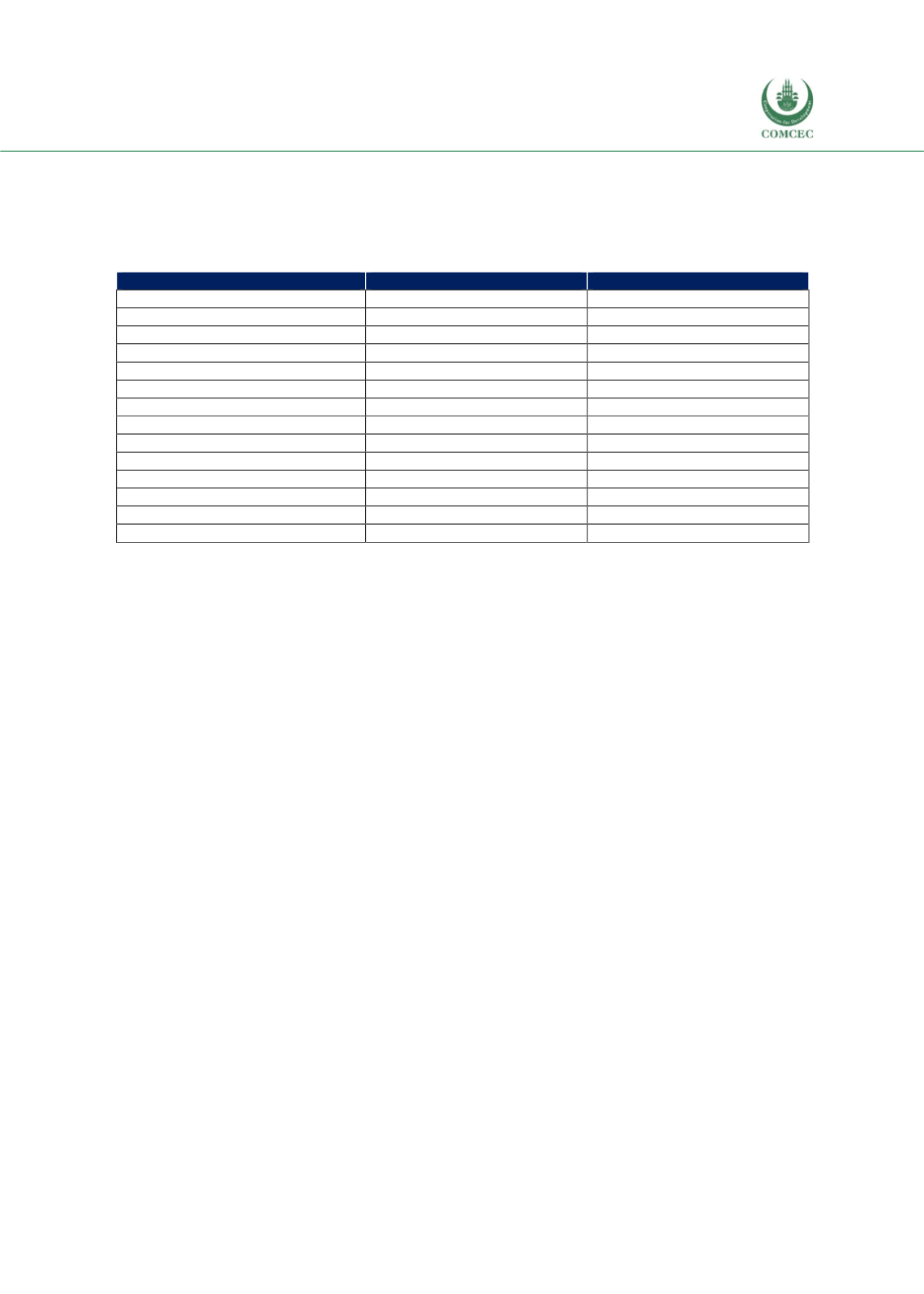

Reviewing Agricultural Trade Policies
To Promote Intra-OIC Agricultural Trade
123
productive inputs due to lack of credit facilities. Additionally, low bargaining power restricts the
farmers to receive reasonable prices for the products to sustain their livelihoods. There are
Government subsidies but not enough. Middlemen in the supply chain are the ones that
determine the price that the farmers will receive.
Table 4. 36 OIC Member Countries that Export to Gambia under Preferential Tariffs
African Group
Arab Group
Asian Group
Benin
Comoros
Afghanistan
Burkina Faso
Djibouti
Albania
Chad
Egypt
Bangladesh
Cote d’Ivoire
Jordan
Indonesia*
Guinea
Mauritania
Iran
Guinea-Bissau
Morocco
Kyrgyzstan
Mali
Palestine
Malaysia*
Mozambique
Somalia
Pakistan*
Niger
Sudan
Tajikistan
Nigeria
Tunisia
Uzbekistan
Senegal*
Yemen
Sierra Leone
Togo
Uganda
Source: WTO RTA Database
Note: Countries marked with an asterisk are among the top 5 OIC countries from which Gambia’s top
import products are imported. Countries written in boldface letters have a free trade agreement in force
with Gambia.
Fisheries has a high potential to create employment and improved nutrition. Fish has great
investment opportunities. There are many foreign companies (Turkish, Spanish, Chinese and
South Korean) with a focus on fish industry. There is a support from FAO for capacity
development as well as government subsidies for fish production. The main problem with
regards to fishing industry is lack of infrastructure. For instance, fish caught in the Gambian
waters are transferred to Senegal and landed in Senegal for storage and transportation. Lack of
infrastructure limits these activities to be performed in The Gambia thus limiting the
opportunities of export marketing of fish in Gambia.
In order improve supply chains, there are various initiatives. One of them is The Gambia -
Commercial Agriculture and Value Chain Management project that is initiated with support
from the World Bank in 2017. The aim is to improve productivity and access to market of
targeted agricultural commodities for smallholders in the project area. Under the Enhanced
Integrated Framework (EIF) Programme, The Sector Competitiveness and Export
Diversification Project (SCEDP) aims responding to the trade related programs. The project
provides specific support for cashew nuts, groundnuts and sesame through finding new export
opportunities and product diversification.
A problem, that is common for most least developed countries, is related to lack of opportunities
for creating value added products. The stakeholders state that the country produces raw
products and exports raw products. The value chain is weak and there is a need to improve on
creating strong value chains. Ministry of Trade and to some extent Ministry of Agriculture are
working on developing value chains.
OIC-Gambia agricultural trade relations and intra-OIC agricultural trade
The Gambia produces very few exportable agricultural products. The export products that are
produced in the country are, peanuts, cashews, sesame, horticultural products (2 large farms
















